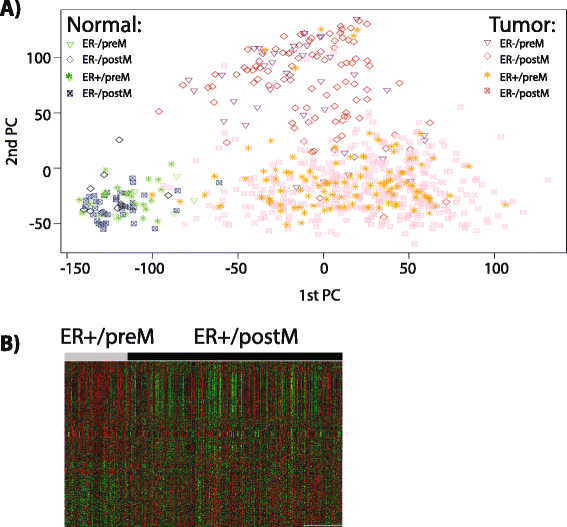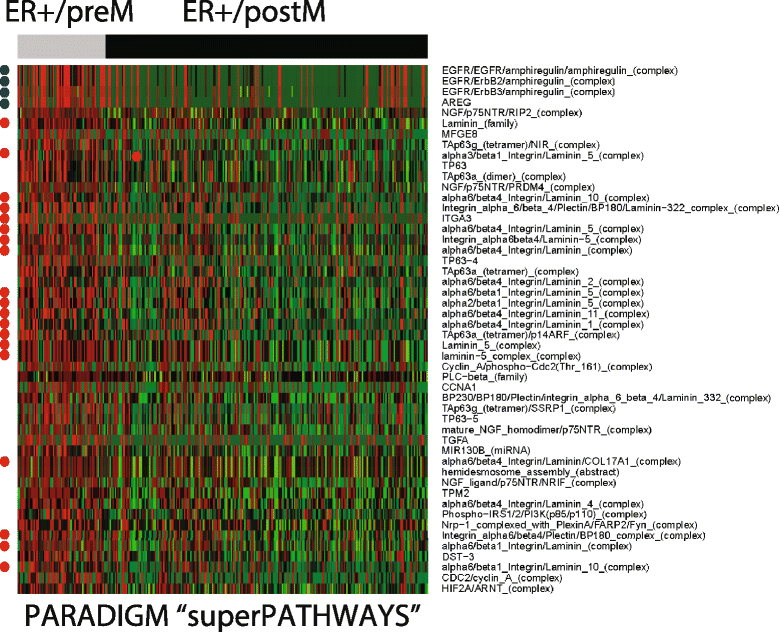The molecular landscape of premenopausal breast cancer
- PMID: 26251034
- PMCID: PMC4531812
- DOI: 10.1186/s13058-015-0618-8
The molecular landscape of premenopausal breast cancer
Abstract
Introduction: Breast cancer in premenopausal women (preM) is frequently associated with worse prognosis compared to that in postmenopausal women (postM), and there is evidence that preM estrogen receptor-positive (ER+) tumors may respond poorly to endocrine therapy. There is, however, a paucity of studies characterizing molecular alterations in premenopausal tumors, a potential avenue for personalizing therapy for this group of women.
Methods: Using TCGA and METABRIC databases, we analyzed gene expression, copy number, methylation, somatic mutation, and reverse-phase protein array data in breast cancers from >2,500 preM and postM women.
Results: PreM tumors showed unique gene expression compared to postM tumors, however, this difference was limited to ER+ tumors. ER+ preM tumors showed unique DNA methylation, copy number and somatic mutations. Integrative pathway analysis revealed that preM tumors had elevated integrin/laminin and EGFR signaling, with enrichment for upstream TGFβ-regulation. Finally, preM tumors showed three different gene expression clusters with significantly different outcomes.
Conclusion: Together these data suggest that ER+ preM tumors have distinct molecular characteristics compared to ER+ postM tumors, particularly with respect to integrin/laminin and EGFR signaling, which may represent therapeutic targets in this subgroup of breast cancers.
Figures




References
Publication types
MeSH terms
Substances
Grants and funding
LinkOut - more resources
Full Text Sources
Other Literature Sources
Medical
Research Materials
Miscellaneous

